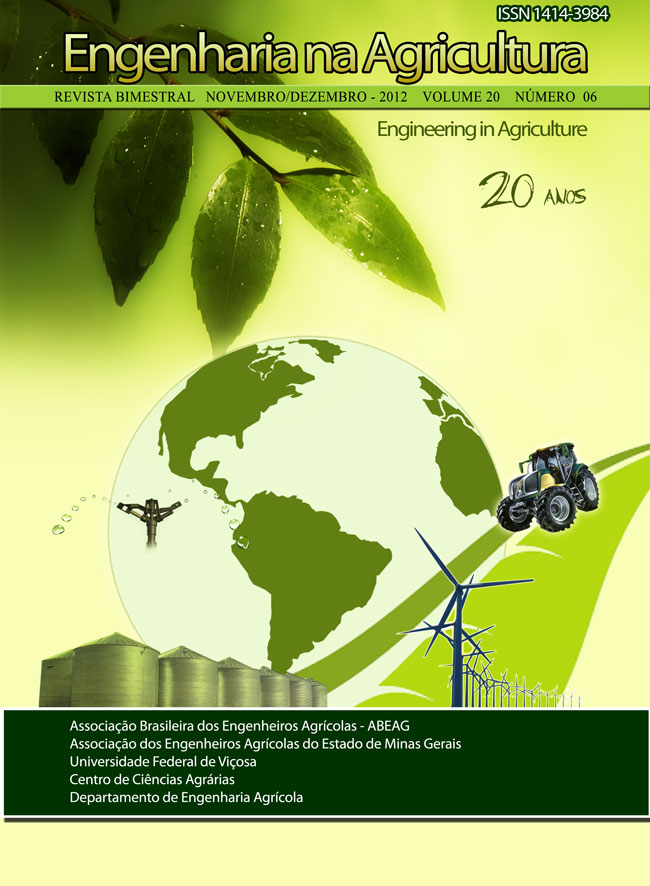SOIL MOBILIZATION IN THREE TILLAGE SYSTEMS
DOI:
https://doi.org/10.13083/reveng.v20i6.332Keywords:
perfil del terreno, ampollamiento, siembra directaAbstract
The action of implements and machines used for the soil prepare can cause losses of great magnitude due to lack or excess layers of treatment. In this study it was determined the rates of mobilization for three tillage systems of soil ferriferous-yellow, subjected to no-tillage during the last five years with crops of corn and beans. The evaluated systems were the conventional, the conservationists subsurface tillage and no-tillage. It was used a tractor wheels (model mf 265), a disk plow, a harrowing, a ripper, a seeder-fertilizer and a profilometer of 2 m. It was raised the natural profiles, internal and finals on the ground. Then, it was determined the mobilized area index, elevation area and blistering, applying simpson’s method to calculate the cross sections. It was used an experimental design in randomized blocks with 4 replications. It was observed significant differences between the indices studied, the conventional system featuring the highest values. The no-tillage system showed the lowest values for the areas of elevation and mobilized, however, the blistering was intermediate. It was concluded that the system of preparation influences the rates of mobilization and that there was a different trend for each system.Downloads
Downloads
Published
How to Cite
Issue
Section
License
Authors who publish with this journal agree to the following terms:
The author(s) authorize(s) the publication of the text in the journal;
The author(s) ensure(s) that the contribution is original and unpublished and that it is not in the process of evaluation by another journal;
The journal is not responsible for the views, ideas and concepts presented in articles, and these are the sole responsibility of the author(s);
The publishers reserve the right to make textual adjustments and adapt texts to meet with publication standards.
From submission, the author is fully conceding the paper's patrimonial rights to the publication, but retaining the owner of its moral rights (authorship and paper's identification) according to Creative Commons Attribution-Noncommercial.








 Licensed by
Licensed by 